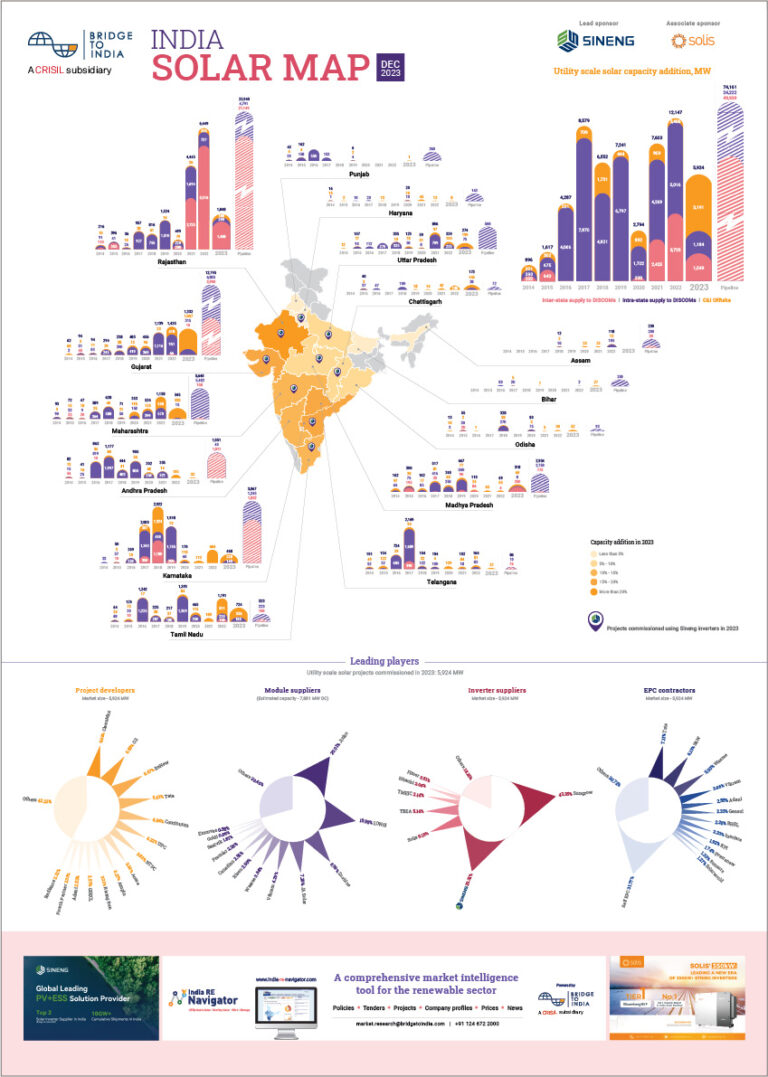Coal India Limited, a public sector company and the world’s largest coal producer, won 100 MW capacity in the recent 500 MW solar auction in Gujarat with a bid of INR 2.20/ kWh. Two of the other four bidders in the auction were also PSUs – NTPC and SJVN won 150 MW and 70 MW capacities with bids of INR 2.20 and 2.21 respectively.
- With conventional businesses slowing down, the PSUs have set ambitious renewable capacity targets and left themselves with no choice but to bid aggressively;
- In a sector with no specific operational or financial complexity, PSU investment is needlessly crowding out private capital;
- The PSUs need to instead play to their strengths and look for opportunities where they enjoy a unique competitive advantage;
Gujarat auction marks Coal India’s first foray into mainstream renewable sector project development activity. Together with NTPC, SJVN, other coal miners and IPPs including NLC, Gujarat State Electrical Corporation (GSEC) and Gujarat Industries Power Company (GIPC), the public sector giants are scaling up their renewable ambitions as conventional power prospects get dimmer.
Table: Presence of PSUs in renewable sector

Source: Company websites, BRIDGE TO INDIA research
Note: This data excludes projects where NTPC and other PSUs are acting as intermediary offtakers.
NTPC has set a target of adding 30,000 MW of renewable capacity by 2032. SJVN, a leading hydropower generator, wants to add 12,000 MW solar capacity by 2030. Meanwhile, coal producers like Coal India and NLC are attracted to the sector both by a desire to be seen as “green” as well as the opportunity to use spare cash. Coal India, generating cash profits of almost USD 3 billion per annum and not nearly enough opportunities to expand coal production, plans to develop 3,000 MW solar capacity over three years as well as set up an integrated solar wafer manufacturing facility.
Determined to grow their renewable business, the PSU giants have given themselves no option but to bid aggressively. But two critical questions arise – 1) can they compete against private developers; and 2) what role should they play in the sector? There is no dearth of equity capital in the project development business – there were as many as 49 unique bidders in large scale solar project auctions alone (setting aside small bidders in agricultural solar tenders) in the last two years. Private developers have sufficient capital and not only all necessary operational expertise but also an advantage over their PSU counterparts in terms of cost optimisation, risk appetite and financial engineering. Sure, the PSUs enjoy advantage of cheaper debt – around 7% as against 9-10% for private developers. But being forced to bid low against private competition is resulting in sub-optimal deployment of capital and crowding out of private investment.
If not project development, then what else? Ideally, the PSUs should play to their strengths (complex businesses needing patient capital, technology advantage, low competition) and look for opportunities where they enjoy a unique competitive advantage – for example, upstream solar manufacturing, hydrogen production, smart grids.












